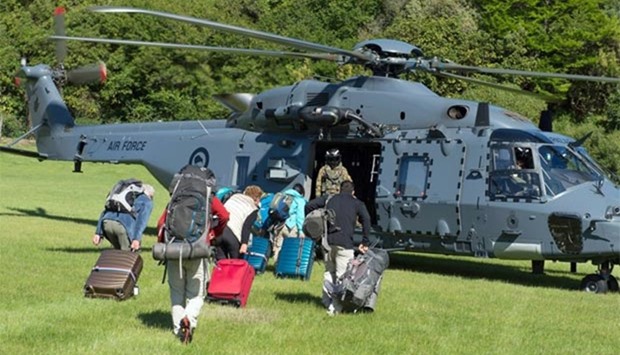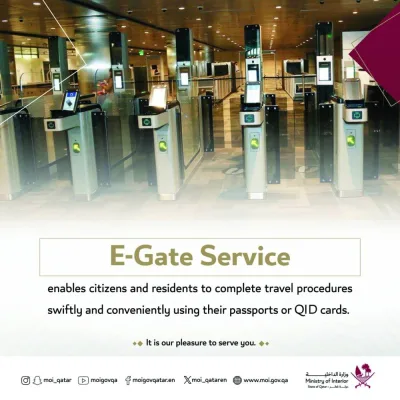Warships from the United States, Canada and Australia have been drafted in to help earthquake relief efforts in New Zealand after a 7.8 tremor devastated parts of the South Island, officials said on Wednesday.
The ships were due in Auckland this week for celebrations marking the New Zealand navy's 75th anniversary but have instead been diverted to the disaster zone.
"It's heartening to see overseas partners so willing to alter their plans and offer their assistance," Defence Minister Gerry Brownlee said.
Brownlee said Wellington had also accepted unspecified aid from the Japanese and Singapore militaries in the wake of the quake that claimed two lives and caused massive infrastructure damage when it hit on Monday.
New Zealand military helicopters on Tuesday started airlifting the first of 1,200 holidaymakers trapped in the seaside town of Kaikoura, which bore the brunt of the seismic jolt.
The navy ship HMNZS Canterbury is expected to arrive later Wednesday and Brownlee said he was also sending three other New Zealand vessels.
He said the international vessels were Canada's HMC Vancouver, Australia's HMAS Darwin and the US destroyer USS Sampson.
The Sampson is the first US warship to visit New Zealand waters in 33 years, ending a ban sparked by a Cold War-era diplomatic spat over Wellington's ban on nuclear-powered vessels.
US Secretary of State John Kerry said on a visit to New Zealand on Sunday that its presence was a historic moment marking "the normalisation of our security cooperation".
The international rescue mission's top priority is evacuating tourists trapped in Kaikoura, which has been cut off after huge landslides severed road and rail access.
The town has a population of 2,000, which was bolstered by tourists, mostly international backpackers attracted by the area's popular whale-watching cruises.
Police say water is running low, power is intermittent and hundreds of people are sheltering in evacuation centres.
Military helicopters airlifted out about 200 to nearby Christchurch on Tuesday and the warship Canterbury will take up to 500 on Wednesday.
Prime Minister John Key said rescuers would deliver much-needed supplies to the town before starting a clean-up that was likely to cost billions of dollars.
"It's more water and food, it's more chemical toilets, it's fixing up the road access, getting those tourists out and then ultimately the big clean-up job," he told TVNZ.
1,200 aftershocks
Auckland holidaymaker David Foulds said he was relieved to get out of Kaikoura after the frightening ordeal.
"We thought it was some guys shaking the car, we didn't know what it was," he told AFP. "It (the car) was jumping up and down. It frightened the life out of me."
The tremor, one of the most powerful ever in the quake-prone South Pacific nation, hit just after midnight on Monday morning, with more than 1,200 aftershocks complicating relief efforts.
The quake triggered numerous landslides that dumped mountains of rocky debris on a main highway and ripped railway tracks 10 metres off course.
Huge fissures opened up in roads and some houses were rocked off their foundations.
New Zealand's official GeoNet said reconnaissance flights had noted between 80,0000 to 100,000 landslips.
"The landslides that have occurred as a result of the earthquake remain dangerous. Material can move at any time," it said in warning people to be cautious.
Trump call
One person died at a historic homestead that collapsed at Kaikoura, with another killed at a remote property north of Christchurch.
Experts said the relatively low death toll was because the quake was centred on a sparsely populated area and hit at night, when people were in their homes.
It was felt across most of the country, causing severe shaking in the capital Wellington, about 250 kilometres away.
The tremor ignited painful memories for Christchurch residents, which was devastated five years ago by a 6.3 tremor that killed 185 people.
Key flew over the quake's epicentre on Monday and said he was shocked to see such "utter devastation".
The New Zealand leader admitted he was concerned that tourism, the country's biggest export earner, would take a hit after images of the damage flashed around the world.
"People worry about earthquakes," he said, adding that many world leaders had phoned him to offer condolences.
But in the chaos that followed the quake he missed a call from US President-elect Donald Trump.
"I didn't see it. It was a crazy time," he said.
"Look he is trying to make contact and that'll happen sometime pretty soon... I'll keep my phone on."

A New Zealand Defence Force helicopter evacuating some of 1,200 of tourists from Kaikoura stranded by a 7.8 earthquake.


